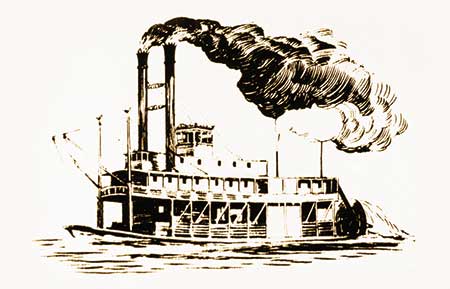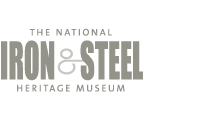During this time, Rebecca Lukens established herself as a prominent ironmaster and her site as a quality iron manufacturer. She established a legacy at the Brandywine Iron Works that allowed the business to succeed, but also turn into one of America's most influential steel sites. Rebecca's legacy included maintaining employee loyalty, producing quality product, pursuing specialty markets, ensuring consistent profit, and adopting new technology. Her successors followed that legacy, allowing the site to become the longest, continuously operating iron and steel site in the U.S. today.
Industrial Revolution and a Legacy
By 1830, engineers had succeeded in building a steam engine light enough to be used
in trains and ships. New transportation methods quickly moved people, goods,
and information up and down the East coast. These changes opened up
new markets for plate, the product of Brandywine Iron Works. The steam engine became
a symbol for progress. By 1840, 3,300 miles of railways had been built throughout
the U.S. and Samuel Morris had obtained patent for the telegraph. Technological innovations
were changing the American way of life.
 |
|
| Steamships and locomotives were the primary markets for iron boiler plate. | |
Exhibit Links
Support The Museum


